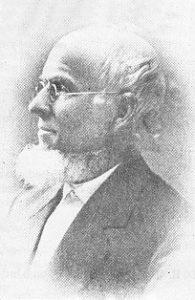
(Nov. 1, 1809-Feb. 15, 1881). Born in Vermont, Willard attended the American Asylum for the Deaf in Hartford, Connecticut, because he became deaf as a result of a childhood illness. After studying under Laurent Clerc, the “Father of Deaf Education,” he became an educator.
Willard joined the original faculty at the Ohio School for the Deaf in Columbus where he taught using American Sign Language. In Ohio, he met his wife, Eliza Young. He moved to Indiana in 1843 and spent a summer traveling the state to recruit deaf students for the small private school he opened in Indianapolis. In January 1844, the state legislature passed an act transforming Willard’s school into a state-funded institution, the Indiana Asylum for the Education of the Deaf and Dumb.
Willard headed the school, first located at the southeast comer of Illinois and Maryland streets, for one year until he was replaced as superintendent by a hearing man. Trustees of the institution assumed that his deafness disqualified Willard from performing effectively as superintendent. Despite facing this discrimination, he remained employed as a teacher at the school until 1864. Willard later brought a suit against the school’s trustees for decreasing his salary without cause.
Outside of his work as an educator, Willard amassed a significant fortune with investments in banks, insurance, and fire stocks, real estate, and as a commissioner of the . This allowed the Willard family to live in a 10-room Greek Revival house at on 80 acres, which he bought in 1847.
Willard Park, at Washington and State streets, the former site of the , is dedicated to his memory.

Help improve this entry
Contribute information, offer corrections, suggest images.
You can also recommend new entries related to this topic.